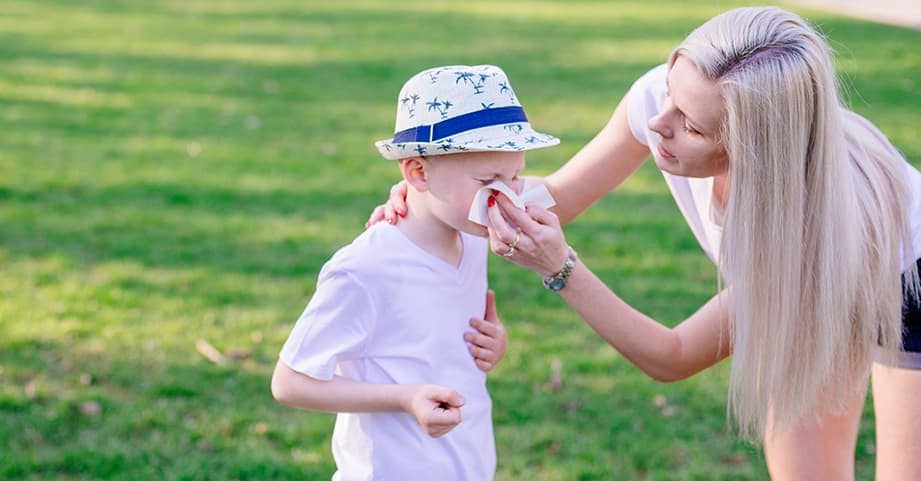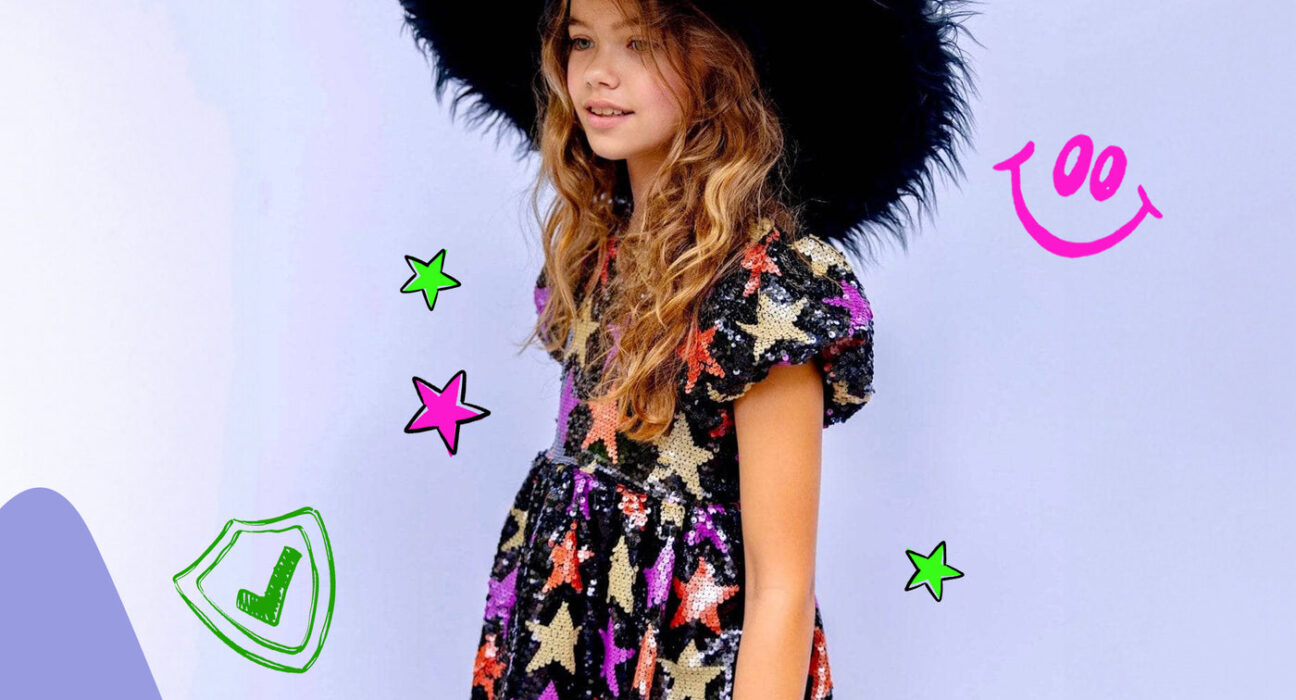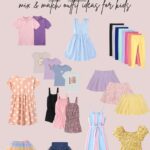Seasonal allergies can be tough for kids and parents. The right clothing can help make a difference.
As spring and fall bring blooming flowers and falling leaves, many children suffer from allergies. Parents often feel overwhelmed by how to help. Choosing the right clothing is essential in managing these allergies. Fabrics that trap pollen can make symptoms worse.
Lightweight, breathable materials can provide comfort while keeping allergens at bay. Layering outfits helps kids adapt to changing weather. Simple strategies, like washing clothes frequently, can also reduce exposure. This guide offers helpful tips for parents. These clothing choices can make a big impact on your child’s comfort and well-being. With the right approach, managing seasonal allergies becomes easier.
Introduction To Seasonal Allergies In Children
Seasonal allergies affect many children. Allergies can cause discomfort and frustration. Parents need to recognize the signs early. Understanding seasonal allergies helps in managing them.
Common Triggers And Symptoms
Seasonal allergies can be triggered by several factors:
- Pollen from trees, grasses, and weeds
- Dust mites
- Mold spores
- Pet dander
Symptoms often include:
- Runny or stuffy nose
- Itchy or watery eyes
- Sneezing
- Coughing
These symptoms can vary in intensity. They may worsen during specific seasons.
Impact On Daily Activities
Seasonal allergies can disrupt daily life. Children may struggle to focus in school. Playing outdoors can become difficult. Symptoms can lead to fatigue and irritability.
Important impacts include:
- Reduced participation in sports
- Difficulty concentrating in class
- Increased absences from school
Parents should monitor their children’s symptoms. Early intervention can help minimize disruptions.
The Role Of Clothing In Allergy Management
Clothing can play a big part in managing seasonal allergies. The right fabric can reduce exposure to allergens. This helps kids breathe easier and feel better.
Parents can choose clothes that keep allergens away. Simple choices in clothing can make a significant difference. Let’s explore some important tips.
Fabric Choices And Allergen Resistance
Choosing the right fabric is key for allergy management. Natural fibers like cotton are often better. They trap less dust and pollen compared to synthetic fabrics.
Avoid fabrics that cling to dust. Fabrics like polyester can hold allergens. Opt for breathable materials that are easy to wash.
Tight Weaves To Minimize Exposure
Look for tightly woven fabrics. These can help block out allergens. A tighter weave means fewer gaps for pollen to enter.
Consider garments made from denim or canvas. These materials offer good protection. Regular washing helps maintain their effectiveness.
Remember, clothing is just one part of allergy management. Every choice helps in creating a safer environment.
Selecting The Right Fabrics
Choosing the right fabrics is crucial for kids with seasonal allergies. The right clothing can reduce exposure to allergens. Parents should focus on materials that are comfortable and safe. This section covers important fabric choices for allergy management.
Natural Vs. Synthetic Materials
Natural materials are usually better for kids with allergies. They allow the skin to breathe. Common natural fabrics include:
- Cotton: Soft and breathable. Good for sensitive skin.
- Linen: Lightweight and absorbent. Helps keep kids cool.
- Wool: Warm but can irritate some skin. Use with caution.
Synthetic materials can trap heat and moisture. This may worsen allergy symptoms. Common synthetic fabrics include:
- Polyester: Durable but not breathable.
- Nylon: Water-resistant but can irritate skin.
Choose natural fabrics for daily wear. They help keep kids comfortable and reduce allergy triggers.
Hypoallergenic Clothing Options
Hypoallergenic clothing is designed to minimize allergy reactions. Look for clothing labeled as hypoallergenic. These items are made from special materials. They reduce the chances of irritation. Here are some options:
| Type | Benefits |
|---|---|
| Organic Cotton | No harmful chemicals. Soft on skin. |
| Bamboo Fabric | Moisture-wicking. Naturally antibacterial. |
| Silk | Soft and smooth. Good for sensitive skin. |
Check labels for specific hypoallergenic features. This helps ensure comfort and safety for your child.

Credit: www.choa.org
Laundry Tips To Reduce Allergens
Managing seasonal allergies in kids requires careful attention to their clothing. One key area to focus on is laundry. Proper washing techniques can significantly reduce allergens. Here are some helpful tips to keep your child’s clothes allergy-free.
Detergents And Washing Techniques
Choosing the right detergent is crucial. Look for products labeled as hypoallergenic. These detergents contain fewer irritants. Avoid scented detergents. Fragrances can trigger allergic reactions.
Use a washing machine with a gentle cycle. This protects the fabric while removing allergens. Always follow the care instructions on clothing labels. Consider using a second rinse cycle. This helps remove any remaining detergent.
Frequency And Temperature Considerations
Wash your child’s clothes regularly. Aim for at least once a week. This reduces the buildup of dust and pollen. During high pollen seasons, increase the frequency to twice a week.
Hot water is effective for killing allergens. Use temperatures of at least 130°F (54°C). Check labels to ensure clothing can withstand heat. For delicate fabrics, cold water is acceptable.
| Tip | Details |
|---|---|
| Detergent Choice | Use hypoallergenic, fragrance-free options. |
| Washing Frequency | Wash clothes weekly, more often in pollen season. |
| Water Temperature | Use hot water (at least 130°F) for effective cleaning. |
These laundry tips can make a real difference. Keeping your child’s clothes clean helps reduce allergy symptoms. Follow these steps to create a more comfortable environment for your little one.
Dressing Strategies For Outdoor Play
Outdoor play is fun for kids. However, seasonal allergies can make it tough. Parents can help by choosing the right clothes. Here are some effective dressing strategies for outdoor play.
Layering For Protection
Layering clothes is smart for outdoor play. It helps keep your child comfortable and protected. Here are some tips:
- Base Layer: Choose a breathable fabric like cotton. This layer keeps moisture away.
- Middle Layer: Use fleece or wool for warmth. This layer provides insulation.
- Outer Layer: Select a water-resistant jacket. This layer shields from wind and rain.
With layering, kids can adjust their clothing. If they get too warm, they can remove a layer. This helps them stay active and enjoy outdoor activities.
Effective Use Of Accessories
Accessories are important for protecting kids from allergies. Here are some useful items:
| Accessory | Purpose |
|---|---|
| Hats | Blocks pollen and sun. |
| Sunglasses | Protects eyes from pollen and UV rays. |
| Scarves | Covers neck and can help filter air. |
| Gloves | Keep hands warm and reduce skin contact with allergens. |
Using these accessories can make a big difference. They help keep children comfortable and reduce allergy symptoms. Parents should encourage their kids to wear them during outdoor play.
Indoor Clothing Considerations
Managing seasonal allergies for kids is important. Indoor clothing choices can help reduce allergens. Parents can create a safe space for their children. Here are some helpful tips for indoor clothing.
Keeping Allergens At Bay Inside
Choose clothes made from synthetic fabrics. Cotton can trap dust and allergens. Synthetic materials are easier to clean. They also resist dust mites better.
Wash clothes regularly in hot water. This helps remove allergens like pollen and dust. Use a hypoallergenic detergent to avoid skin irritation.
Keep indoor shoes separate. Designate a pair for inside use. This helps keep outdoor allergens at bay.
Changing Clothes After Outdoor Activities
Change your child’s clothes right after outdoor play. Pollen and dust can cling to clothing. This reduces allergens in the home.
Store outdoor clothes in a designated area. This keeps allergens from spreading. Encourage your child to wash their hands after changing.
Use a lint roller on clothes before entering the house. This removes any lingering pollen or dust. These small steps can make a big difference.
The Importance Of Footwear Choices
Choosing the right footwear plays a big role in managing seasonal allergies for kids. Shoes can trap pollen and other allergens. Proper footwear helps reduce exposure to these irritants. Parents should focus on selecting the best shoes and maintaining them for their child’s health.
Selecting Shoes To Minimize Pollen Spread
When choosing shoes for allergy-prone kids, consider the following:
- Closed-toe shoes: These prevent pollen from entering.
- Smooth soles: Shoes with smooth soles trap less dirt and allergens.
- Washable materials: Choose shoes that can be easily cleaned.
- Breathable fabrics: Shoes made of cotton or mesh help reduce sweat.
Some recommended shoe types include:
| Type of Shoe | Benefits |
|---|---|
| Sneakers | Good support and easy to clean. |
| Boots | Protects feet from dirt and moisture. |
| Sandals | Keep feet cool, but choose closed options. |
Cleaning And Storage Tips
Regular cleaning of shoes helps reduce allergens. Follow these tips:
- Remove dirt and pollen after outdoor play.
- Wash shoes according to the manufacturer’s instructions.
- Store shoes in a dry, clean place.
For long-term storage:
- Use shoe bags to protect from dust.
- Keep shoes away from damp areas to prevent mold.
- Check shoes regularly for wear and tear.
Choosing the right footwear and maintaining it is essential for kids with allergies. Proper care helps keep allergens at bay.
Headwear To Guard Against Allergens
Seasonal allergies can be tough for kids. Allergens like pollen can make them uncomfortable. Choosing the right headwear helps protect them. Hats and caps can block allergens from reaching their faces. This simple step makes outdoor play more enjoyable.
Hats And Caps As Protective Gear
Hats and caps serve as a barrier against allergens. Wide-brimmed hats are best. They cover the face, neck, and ears. This reduces exposure to pollen and dust. Caps with adjustable straps fit snugly. They stay on during playtime. Choose hats made from breathable materials. Cotton and lightweight fabrics work well.
Bright colors and fun designs attract kids. Let them pick their favorite styles. This makes wearing headwear exciting. Encourage them to wear hats each time they go outside. Consistent use builds a habit. It helps minimize allergy symptoms during peak seasons.
Maintaining Cleanliness Of Headwear
Clean headwear is key to fighting allergens. Regular washing removes dust and pollen. Follow the care label on the hat. Most can be machine washed. Use a gentle detergent to protect the fabric.
Store hats in a clean, dry place. Avoid areas where dust gathers. Check for any visible dirt before each use. A quick shake can help remove loose particles. Keeping headwear clean makes a big difference. It ensures your child stays comfortable and safe.
Protective Measures For Sleepwear
Managing seasonal allergies in kids requires careful planning. Sleepwear is an essential part of this strategy. The right pajamas can help reduce exposure to allergens. This section covers tips for choosing sleepwear and bedding that protect sensitive skin.
Choosing Pajamas For Sensitive Skin
When selecting pajamas, consider the fabric. Some materials can irritate sensitive skin. Look for the following types:
- Cotton: Soft and breathable.
- Bamboo: Hypoallergenic and moisture-wicking.
- Modal: Smooth and gentle on the skin.
Avoid fabrics like polyester and wool. These can trap heat and moisture, making allergies worse.
Here are some tips to keep in mind:
- Choose loose-fitting pajamas.
- Opt for light colors to avoid dyes.
- Wash new pajamas before use.
Allergen-proof Bedding Solutions
Invest in allergen-proof bedding. This can make a big difference for your child. Use the following items:
| Item | Description |
|---|---|
| Allergen-Proof Mattress Covers | Blocks dust mites and allergens. |
| Pillow Protectors | Keeps allergens away from pillows. |
| Hypoallergenic Comforters | Reduces exposure to allergens. |
Regularly wash bedding in hot water. This helps kill dust mites and remove allergens. Make sure to dry bedding thoroughly to avoid moisture.
Follow these tips to create a safe sleeping environment. Your child’s comfort and health matter most.

Credit: lolaandtheboys.com
Educating Kids On Allergy-friendly Clothing
Teaching kids about allergy-friendly clothing helps them understand their needs. It builds awareness and encourages responsible choices. This knowledge is essential for managing their allergies effectively. Parents can make this process fun and interactive.
Involving Children In Clothing Selection
Let children help choose their clothes. Take them shopping for allergy-friendly fabrics. Explain which materials are best for their allergies. Cotton and bamboo are often good choices. Avoid synthetic fabrics that trap allergens.
Encourage kids to pick their favorite colors and styles. This makes them feel included. They are more likely to wear what they choose. Show them how to read clothing labels. Teach them to look for allergy-friendly tags.
Teaching Self-care And Awareness
Teach kids about their allergies. Explain how certain fabrics can affect their health. Help them understand why they need to avoid specific items. This builds their self-care skills. Kids can learn to check their clothes for allergens.
Encourage kids to talk about their needs. This improves their confidence. Discussing allergies with friends helps create awareness. Role-playing can make this easier. Kids can practice explaining their choices in a safe space.
Navigating Social Settings And Events
Social events can be challenging for kids with seasonal allergies. Parents need to prepare well. Proper clothing choices can help reduce allergy symptoms. Here are some helpful tips for different situations.
Prepping For Parties And Gatherings
Parties often mean new environments and allergens. Here are steps to help your child enjoy events:
- Choose breathable fabrics: Cotton is a good option.
- Avoid synthetic materials: These can trap heat and moisture.
- Layer clothing: This helps control temperature indoors and outdoors.
- Pack extra clothes: In case of spills or allergy flare-ups.
Before the event, talk to your child. Explain what to expect. Discuss triggers they might encounter. Encourage them to speak up if they feel unwell.
School Uniforms And Allergy Accommodations
Many schools have uniform policies. It can be tricky for kids with allergies. Here are tips for managing school uniforms:
- Check uniform materials: Opt for allergy-friendly fabrics.
- Communicate with teachers: Inform them about your child’s allergies.
- Request accommodations: Some schools allow flexible options.
- Consider after-school activities: Dress your child appropriately for different settings.
Work with the school. Create a supportive environment for your child. This helps them feel safe during events and activities.

Credit: www.childrens.com
Seasonal Wardrobe Rotation And Storage
Managing seasonal allergies in kids involves more than just medications. Parents must also consider clothing. The right clothes can help reduce allergens. Rotating seasonal wardrobes is key. It ensures your child wears the right clothing for each season.
Cycling Clothes With The Seasons
Switching clothes with the seasons helps keep allergens at bay. Here are some tips to cycle clothes effectively:
- Assess the Weather: Check the forecast. Know what clothes are needed.
- Sort by Season: Organize clothes into summer, fall, winter, and spring.
- Check for Allergens: Inspect for mold or dust before storing.
Follow this simple rotation system:
- Gather all clothes from the current season.
- Wash items to remove allergens.
- Store seasonal items in bins.
- Label bins clearly for easy access.
- Rotate in clothes for the new season.
Keeping Stored Clothing Allergen-free
Proper storage keeps clothes fresh and allergen-free. Follow these steps:
- Clean Clothes: Wash all clothes before storing. This removes dust and allergens.
- Use Airtight Containers: Store clothes in airtight bins. This prevents moisture and pests.
- Dry Completely: Ensure clothes are fully dry. Damp clothes can attract mold.
- Store in a Cool Place: Keep bins in a dry, cool area. Avoid humid places.
By managing seasonal wardrobe rotation and storage, you help your child stay comfortable and healthy.
Conclusion: Embracing The New Normal
Managing seasonal allergies in children is vital for their well-being. Parents can help by creating a comfortable environment. Choosing the right clothing plays a key role. Here are some tips to adapt to this new normal.
Adapting To Allergy-friendly Routines
Building a routine helps children cope with allergies. Focus on these areas:
- Clothing choices: Use breathable, hypoallergenic fabrics.
- Washing clothes: Clean items in hot water to remove allergens.
- Layering: Dress in layers for easy adjustments.
- Outdoor time: Plan outings when pollen counts are low.
Routine changes can reduce allergy symptoms. Make it fun. Involve kids in picking their outfits.
Support Networks And Resources
Connecting with others helps ease the burden. Consider these options:
- Join local support groups for parents.
- Follow online forums about allergies.
- Consult allergists for expert advice.
- Read blogs or articles on allergy management.
Support networks provide valuable information. They share tips and experiences. Use these resources to empower your family.
Frequently Asked Questions
How Can Clothing Help With Kids’ Seasonal Allergies?
Choosing the right clothing can minimize allergy symptoms. Lightweight, breathable fabrics reduce sweat and irritation.
What Materials Are Best For Kids With Allergies?
Cotton and hypoallergenic fabrics are ideal. They prevent skin reactions and are comfortable to wear.
Should I Wash Kids’ Clothes Differently During Allergy Season?
Yes, wash clothes in hot water to remove allergens. Use fragrance-free detergents to avoid irritation.
How Often Should I Change My Child’s Clothes During Allergy Season?
Change clothes regularly, especially after outdoor play. This helps keep allergens away and reduce symptoms.
Conclusion
Seasonal allergies can be tough for kids. Choosing the right clothing helps. Look for light, breathable fabrics. Dress them in layers for changing weather. Wash clothes often to remove allergens. Avoid outdoor activities on high pollen days. Simple steps make a big difference.
With the right clothing, kids can enjoy the season more. Keep them comfortable and happy. Your care will help them breathe easier and play freely. Stay proactive, and manage those allergies together.







